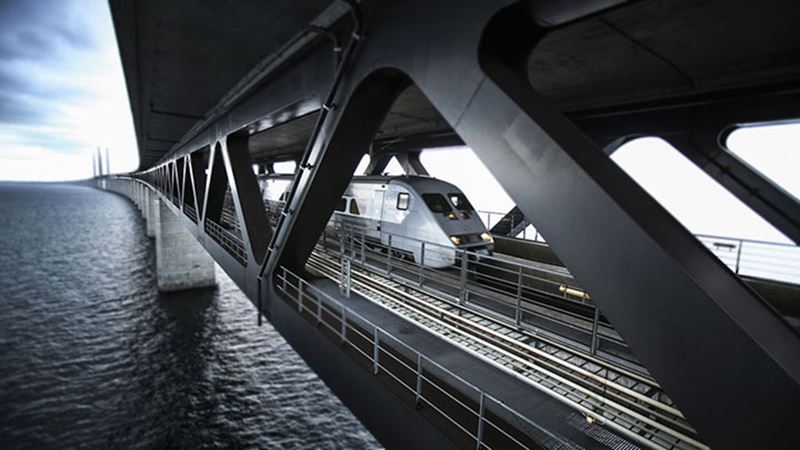Easy round the bend

The innovative HALL® railway hydraulic axle guide unit allows axles to relax a bit into curves while ensuring they remain rigid when running at high speed on a straight track. With HALL, trains run more cost effectively, use less fuel, emit less CO2, make less noise as they go through tight curves, and also save on track and wheel maintenance. Unfortunately, Bombardier, one of the world’s leading train manufacturers could not benefit from the HALL technology as it was incompatible with its bogies.
Andreas Wolf, then Chief Suspension Engineer with Bombardier, now Team Manager Engineering Railway within Trelleborg Industrial Solutions, remembers: “Bombardier approached Trelleborg to start a joint development project.” Not only did the cooperation produce a special HALL that fits Bombardier trains, but it extended the design to further improve performance.
In the Bombardier application, the unit must deal with high vertical loads, but essentially the FLEXX® Curve Standard, as it’s called, applies the HALL principle. And it can be retrofitted to Bombardier trains with FLEXX Compact bogies.
The real innovation is the cross-coupled version, where the HALLs on both wheels of an axle are hydraulically connected in what Alexander Zahnbrecher, Project Engineer with Trelleborg, describes as a “hydraulic seesaw — when the forces on each wheel are about equal, the system is balanced and rigid, but when they are subject to different forces, the system moves in that direction.” That is particularly useful in starting and stopping and going through tighter curves: Bombardier will be applying it to all new trains running routes with many curves, saving an estimated 145 tons of CO2 in 10 years for every four-car train.
A third version, called Passive Radial Steering, features an intelligent valve that blocks hydraulic movement under certain circumstances and improves performance on even tighter curves. On a 300-meter-radius curve, wheel wear will be reduced by 90 percent. That will come into its own on mountain routes such as in Switzerland, especially since track charges in the country are lower for trains that do less damage to the track.
For more information, please go to:
https://www.trelleborg.com/en/anti-vibration-solutions
This is an article has been reproduced from Trelleborg's T-Time magazine. To download the latest edition, go to: www.trelleborg.com/t-time
Press Service: This article is available in eight languages. Media are welcome to use this article in their own publications. To download the article and pictures in any language go to https://bamboo-contentpartner.com/. If you reproduce information from this release, please give contact details as: www.trelleborg.com.